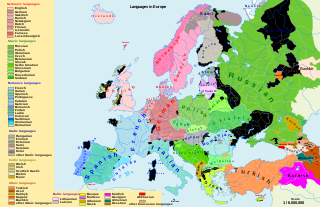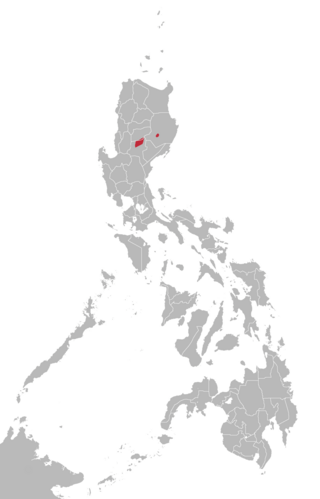
There are over 250 languages indigenous to Europe, and most belong to the Indo-European language family. Out of a total European population of 744 million as of 2018, some 94% are native speakers of an Indo-European language. The three largest phyla of the Indo-European language family in Europe are Romance, Germanic, and Slavic; they have more than 200 million speakers each, and together account for close to 90% of Europeans.
The Goidelic or Gaelic languages form one of the two groups of Insular Celtic languages, the other being the Brittonic languages.

The United States does not have an official language at the federal level, but the most commonly used language is English, which is the de facto national language. In addition, 32 U.S. states out of 50 and all five U.S. territories have declared English as an official language. The great majority of the U.S. population speaks only English at home. The remainder of the population speaks many other languages at home, most notably Spanish, according to the American Community Survey (ACS) of the U.S. Census Bureau; others include indigenous languages originally spoken by Native Americans, Alaska Natives, Native Hawaiians, and native populations in the U.S. unincorporated territories. Other languages were brought in by people from Europe, Africa, Asia, other parts of the Americas, and Oceania, including multiple dialects, creole languages, pidgin languages, and sign languages originating in what is now the United States. Interlingua, an international auxiliary language, was also created in the U.S.

The Mayan languages form a language family spoken in Mesoamerica, both in the south of Mexico and northern Central America. Mayan languages are spoken by at least six million Maya people, primarily in Guatemala, Mexico, Belize, El Salvador and Honduras. In 1996, Guatemala formally recognized 21 Mayan languages by name, and Mexico recognizes eight within its territory.

The Karaim language, also known by its Hebrew name Lashon Kedar is a Turkic language belonging to the Kipchak group, with Hebrew influences, similarly to Yiddish or Judaeo-Spanish. It is spoken by only a few dozen Crimean Karaites in Lithuania, Poland, Crimea, and Galicia in Ukraine. The three main dialects are those of Crimea, Trakai-Vilnius and Lutsk-Halych, all of which are critically endangered. The Lithuanian dialect of Karaim is spoken mainly in the town of Trakai by a small community living there since the 14th century.

The Ivatan language, also known as Chirin nu Ivatan, is an Austronesian language spoken in the Batanes Islands of the Philippines.

Chumashan was a family of languages that were spoken on the southern California coast by Native American Chumash people, from the Coastal plains and valleys of San Luis Obispo to Malibu, neighboring inland and Transverse Ranges valleys and canyons east to bordering the San Joaquin Valley, to three adjacent Channel Islands: San Miguel, Santa Rosa, and Santa Cruz.

Barbacoan is a language family spoken in Colombia and Ecuador.

Chuukic, historically also rendered as Trukic, is a subgroup of the Chuukic–Pohnpeic family of the Austronesian language family. The languages are primarily spoken in Chuuk State and Yap State of the Federated States of Micronesia, as well as in the outer islands of Palau. The Carolinians of the Commonwealth of the Northern Mariana Islands also speak their own language distinct from the historically native Chamorro people.

Ekari is a Trans–New Guinea language spoken by about 100,000 people in the Paniai lakes region of the Indonesian province of Central Papua, including the villages of Enarotali, Mapia and Moanemani. This makes it the second-most populous Papuan language in Indonesian New Guinea after Western Dani. Language use is vigorous. Documentation is quite limited.

Spanish is the language that is predominantly understood and spoken as a first or second language by nearly all of the population of Argentina. According to the latest estimations, the population is currently greater than 45 million.

The linguistic situation of the Bailiwick of Guernsey is quite similar to that of Jersey, the other Bailiwick in the Channel Islands. English is the official language, French is used for administration, there are several varieties of Norman language used by a minority of the population, and Portuguese is spoken by some immigrants in the workforce.

The official language of Monaco is French. Monégasque, a variety of Ligurian, is the national language of the Monégasque people. However, it is the primary language of very few people. There are several other languages spoken in addition to French and Monégasque, including Italian and English.

The official language of Greece is Greek, spoken by 99% of the population. In addition, a number of non-official, minority languages and some Greek dialects are spoken as well. The most common foreign languages learned by Greeks are English, German, French and Italian.

The Gaddang language is spoken by up to 30,000 speakers in the Philippines, particularly along the Magat and upper Cagayan rivers in the Region II provinces of Nueva Vizcaya and Isabela and by overseas migrants to countries in Asia, Australia, Canada, Europe, in the Middle East, United Kingdom and the United States. Most Gaddang speakers also speak Ilocano, the lingua franca of Northern Luzon, as well as Tagalog and English. Gaddang is associated with the "Christianized Gaddang" people, and is closely related to the highland tongues of Ga'dang with 6,000 speakers, Yogad, Cagayan Agta with less than 1,000 and Atta with 2,000, and more distantly to Ibanag, Itawis, Isneg and Malaweg.
Duli is an extinct Adamawa language of northern Cameroon.
Satawalese is a Micronesian language of the Federated States of Micronesia. It is nearly mutually intelligible with Mortlockese and Carolinian.
Lovono is a nearly extinct language of the island of Vanikoro in the easternmost province of the Solomon Islands. As of 2012, it is only spoken by four speakers; it has been replaced by the island’s dominant language, Teanu.

The Ibanag language is an Austronesian language spoken by up to 500,000 speakers, most particularly by the Ibanag people, in the Philippines, in the northeastern provinces of Isabela and Cagayan, especially in Tuguegarao, Solana, Abulug, Camalaniugan, Lal-lo, Cabagan, Tumauini, San Pablo, Sto. Tomas, Sta. Maria, and Ilagan and other neighboring towns and villages around the Cagayan River and with overseas immigrants in countries located in the Middle East, United Kingdom, and the United States. Most of the speakers can also speak Ilocano, the lingua franca of northern Luzon island. The name Ibanag comes from the prefix I which means 'people of', and bannag, meaning 'river'. It is closely related to Gaddang, Itawis, Agta, Atta, Yogad, Isneg, and Malaweg.

Mapia Atoll, historically known as the Freewill Islands or San David, is an atoll in the Pacific Ocean. It is located in Papua province of Indonesia, approximately 190 kilometers north of the city of Manokwari and 630 kilometers from the islands of Palau. It consists of two main islands, Bras (Berasi) and Pegun (Mapia), the smaller Fanildo, and two minor islands, Bras Kecil and Fanildo Kecil. The islands constitute a part of West Supiori District within Supiori Regency, Papua. The population at the 2020 Census was 199.
















